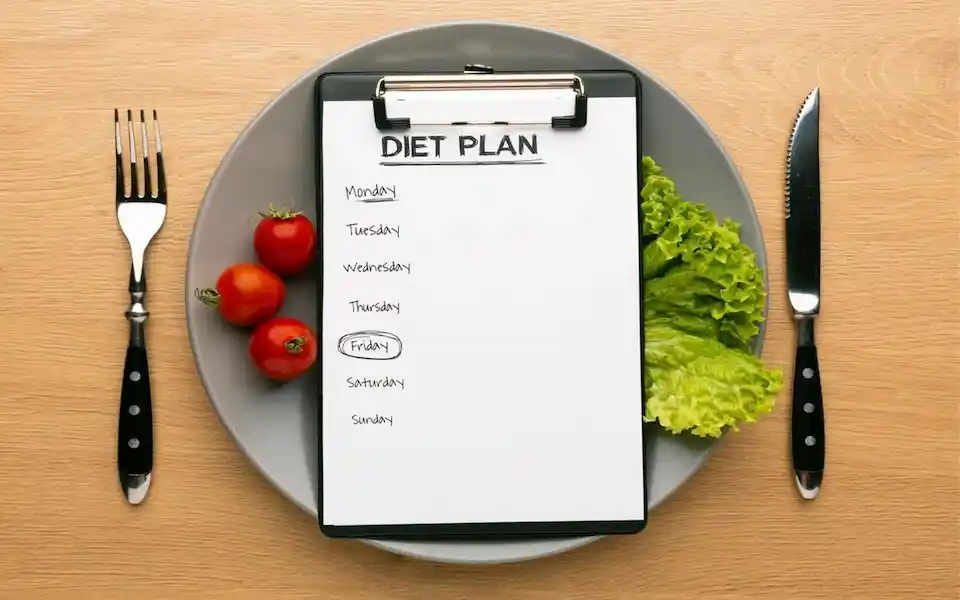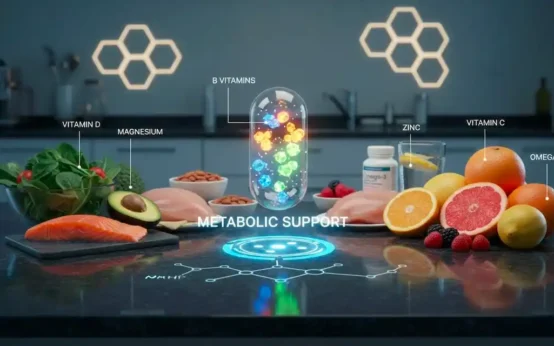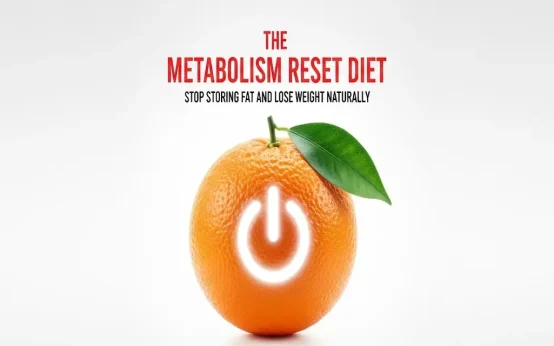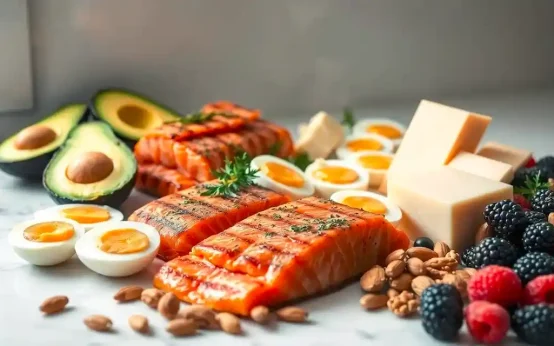A lot of people want to lose weight, but it can be hard to know where to start because there are so many diets that claim to work quickly. Following a healthy, well-balanced meal plan that feeds your body and helps you lose fat is the key to long-term weight loss, not going without food or cutting back on food too much. A well-thought-out meal plan can help you lose weight, get more energy, and improve your health without making you feel starved.
Core Principles Of A Healthy Weight Loss Diet
1. Caloric Deficit (but Not Deprivation)
To lose weight, you need to consume fewer calories than your body burns. This is called a calorie shortage. But this doesn’t mean cutting calories by a lot. You can lose one to two pounds of healthy weight each week if you have a small shortage of 500 to 700 calories per day. This won’t hurt your digestion or mental health.
2. Macronutrient Balance
To work right, your body needs the right amount of fats, proteins, and carbohydrates:
- Protein helps your muscles stay strong and full for longer. Add tofu, veggies, eggs, Greek yoghurt, lean foods, and so on.
- Carbohydrates give you energy. Instead of white bread or sugar, eat complex carbs like quinoa, sweet potatoes, brown rice, and oats.
- Healthy fats, like those in olive oil, nuts, seeds, avocados, and avocados, help hormones work and make you feel full.
3. Micronutrient Density
Pay attention to foods like veggies, fruits, beans, and whole grains that are high in vitamins and minerals. These help your body stay healthy and your immunity system while you lose weight.
4. Portion Control And Mindful Eating
Even if you eat a lot of good food, you can still gain weight. Avoid multitasking while you eat, use smaller plates, and pay attention to your body’s cues for when it’s hungry and full.
Structuring The Meal Plan
Meal Frequency
Eating three well-balanced meals a day and one to two healthy snacks helps keep blood sugar in check and keeps you from overeating. Another choice is intermittent fasting, but not everyone needs to do it.
Hydration
People often forget that having enough water can help control hunger, speed up the metabolism, and make digestion easier. Drink at least 8 cups of water every day. You can mix things up with herbal drinks and flavoured water.
Meal Timing & Consistency
Aim to eat meals at normal times. This keeps blood sugar levels steady and stops you from snacking when you don’t need to. If you skip meals, especially breakfast, you might eat too much later.
Sample 7-day Meal Plan
This meal plan is easy to change up. You can change the portions based on how many calories you need.
Day 1
- Greek yoghurt with berries and chia seeds for breakfast
- Lunch: chicken salad on the grill with olive oil dressing
- Fruit and nut butter on apple slices for a snack
- Salmon baked in a pan with rice and broccoli steamed
Day 2
- For breakfast, I had oatmeal with nuts and a banana.
- Lentil soup and whole grain toast for lunch
- Horkey and carrot sticks for a snack
- Dinner: stir-fried turkey with brown rice and greens
Throughout the week, do this again, but this time with different meats, veggies, and carbs. Give them choices like lean meat, tofu, beans, sweet potatoes, eggs, and so on.
Substitution Ideas:
- If you can’t have dairy, use plant-based milk or yoghurt.
- Instead of meat, use beans, tofu, or tempeh if you’re a vegetarian.
- If you can’t have gluten, pick foods that aren’t gluten, like millet, rice, or quinoa.
Foods To Prioritise And Avoid
Eat More Of:
- Whole Foods: Vegetables, fruits, whole grains, legumes
- Lean Proteins: Chicken breast, turkey, eggs, fish, beans
- Healthy Fats: Olive oil, avocados, nuts, and seeds
- Fibre-Rich Foods: Crucial for digestion and fullness
Limit Or Avoid:
- Refined Carbs: White bread, pasta, and pastries
- Added Sugars: Soda, candy, most packaged snacks
- Processed Foods: Items with long ingredient lists, preservatives, and artificial flavours
- High-Calorie Beverages: Juices, alcohol, sugary coffee drinks
Practical Tips For Meal Planning And Prep
The key to success is to plan. To stay on track, try these:
- Make a Grocery List: Stick to the store’s outside aisles, where fresh vegetables, meats, and dairy are found.
- Batch cooking: To save time, make a lot of meals at once, like soups, grilled meats, or grain bowls.
- Ingredient Preparation: For easy assembly, chop vegetables or prepare rice ahead of time.
- Portion control: To keep from eating too much, use containers or meal prep boxes.
- Keep Healthy Snacks Handy: Keep nuts, cooked eggs, and veggies on hand for easy options.
Monitoring Progress & Staying Motivated
It’s not enough to just look at the scale to lose weight. Keep track of progress by:
- Non-scale victories: Fitting into clothing better, more energy, or better sleep
- Photos and Measurements: Visual tracking lets you see changes in body makeup
- Food Journals or Apps: Track your food and exercise goals with apps like MyFitnessPal and Cronometer.
To stay inspired, make your goals attainable, give yourself prizes (that aren’t food), and hang out with people who will support you.
Conclusion
A healthy meal plan for weight loss is more than just cutting calories. It’s also about giving your body what it needs in a way that you enjoy. You can lose weight and improve your health for good if you focus on whole foods, the right amount of food, and regularity. Don’t forget that every little thing counts. Listen to your body, start with changes that you can handle, and be patient with the process. Real food and real work lead to real results.





 How to Start a Weight Loss Program
How to Start a Weight Loss Program  What Vitamin Deficiency Makes It Hard to Lose Weight?
What Vitamin Deficiency Makes It Hard to Lose Weight?  Improve Fat Burning With a Metabolism Reset Diet
Improve Fat Burning With a Metabolism Reset Diet  The Best Food for the Keto Diet
The Best Food for the Keto Diet  How to Avoid Loose Skin When Losing Weight
How to Avoid Loose Skin When Losing Weight  Can You Lose Weight on Carnivore Diet?
Can You Lose Weight on Carnivore Diet?